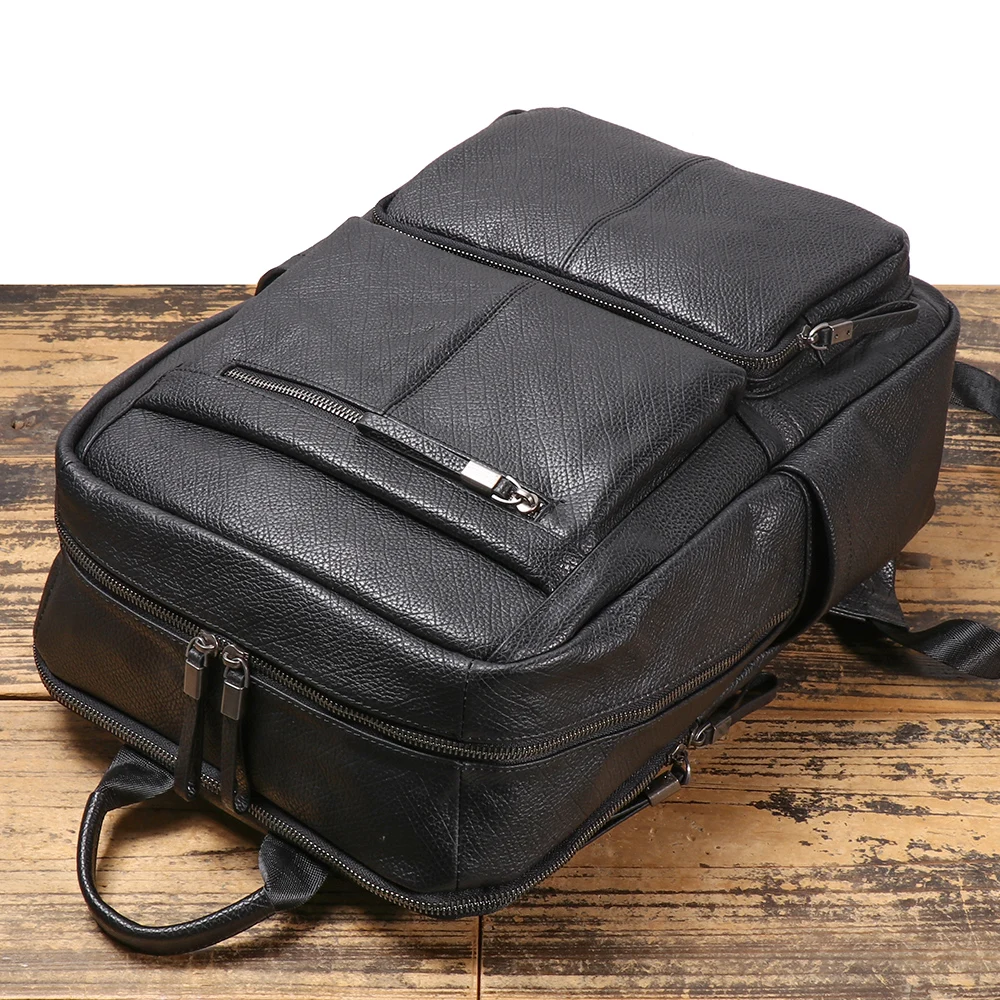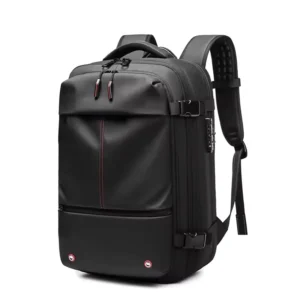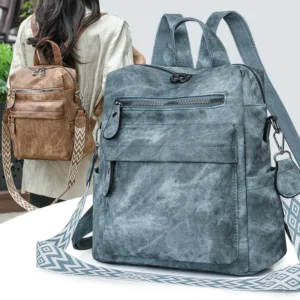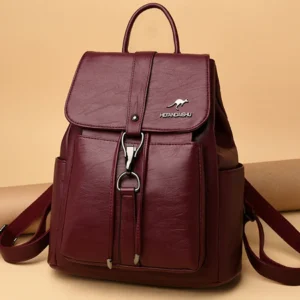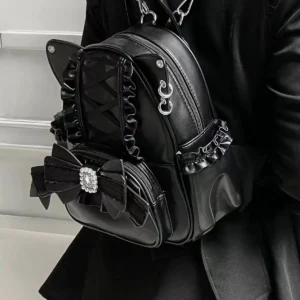Introduction: The Critical Importance of Proper Backpack Sizing for Travelers
Selecting the right travel backpack isn’t just about aesthetics or brand—it’s fundamentally about finding the perfect size that complements your body and travel needs. A properly sized backpack transforms your journey from a potential ordeal of discomfort into a seamless adventure. This fit encompasses three critical dimensions: body compatibility (torso length and hip size), internal capacity for your belongings, and external dimensions that comply with travel restrictions.
The consequences of getting sizing wrong can be serious. Studies suggest that up to 60% of travelers experience back, neck, or shoulder pain from improperly fitted bags. Imagine rushing through a crowded terminal with an oversized pack throwing you off balance, or trying to squeeze essential gear into a backpack that’s frustratingly small for your needs.
In this comprehensive guide, you’ll discover:
- How to accurately measure your torso for an ideal backpack fit
- Methods for determining the optimal capacity for different travel styles
- Strategies for navigating airline carry-on restrictions
- Techniques for ensuring maximum comfort through proper fit adjustments
At Summit Carry, we believe that proper sizing forms the foundation of exceptional travel gear, just as proper leather conditioning and waterproofing ensures longevity. When your backpack fits correctly, it becomes an extension of yourself rather than a burden to bear.
How to Determine Your Torso Length for Perfect Backpack Fit
Understanding your torso length—not your overall height—is the essential first step toward backpack comfort. While two people might stand at identical heights, their torso measurements could differ significantly, requiring completely different backpack sizes.
Follow this step-by-step process to measure your torso accurately:
- Find a friend to help (measuring yourself leads to inaccurate results)
- Tilt your head forward to locate the C7 vertebra—the bony bump where your neck meets your shoulders
- Place your hands on your hips, feeling for your iliac crest (the top of your hip bones)
- Imagine a line running horizontally between the tops of your hip bones
- Measure the distance from your C7 vertebra down to this imaginary line—this is your torso length
Most premium backpacks use this measurement to determine appropriate sizing:
- Small: 15-17 inches (38-43 cm)
- Medium: 18-20 inches (45-50 cm)
- Large: 21+ inches (53+ cm)
Common measuring mistakes include measuring to the bottom of the spine (too low), not keeping the measuring tape straight against the curve of your back, or measuring yourself without assistance. Remember that ensuring proper fit is just as important as completely waterproofing your leather bags for protection—both preserve your comfort and investment.
Choosing the Optimal Backpack Capacity for Your Travel Style
Backpack capacity, measured in liters, determines how much gear you can carry. Finding the right balance between having enough space without encouraging overpacking requires understanding your personal travel style and destination needs.
Consider these capacity recommendations based on trip duration and style:
| Trip Duration | Minimalist Style | Moderate Packer | Comfort-Focused |
|---|---|---|---|
| Weekend (1-3 days) | 15-25L | 20-30L | 25-35L |
| Week-long | 25-35L | 35-45L | 45-55L |
| Extended (2+ weeks) | 35-45L | 45-55L | 55-65L+ |
For weekend trips (20-30 liters), you’ll fit 2-3 outfits, basic toiletries, and a few personal items. A week-long journey (30-45 liters) accommodates approximately 5-7 outfits, standard toiletries, and a few extras like a tablet or small camera. Extended travel (45-65 liters) allows for 10+ outfits, full toiletry kits, and additional gear like camera equipment or specialized clothing.
Climate considerations dramatically impact capacity needs—cold weather destinations require bulkier clothing that consumes more space. Similarly, professional travel might demand formal wear that doesn’t compress as efficiently as casual clothing.
Slightly expandable designs offer versatility across different scenarios, letting you adjust between a compact city exploration mode and expanded capacity for souvenir collection. Premium materials like full-grain leather maximize functional capacity through thoughtful design that creates usable space without excessive bulk, similar to how proper leather conditioning preserves both appearance and functionality.
Navigating Airline Carry-On Restrictions to Avoid Check-In Fees
Understanding the external dimensions of your travel backpack is crucial for avoiding the frustration of gate-checking your carefully packed bag. Most airlines have specific size restrictions for carry-on luggage, though these vary between carriers and can change based on aircraft type.
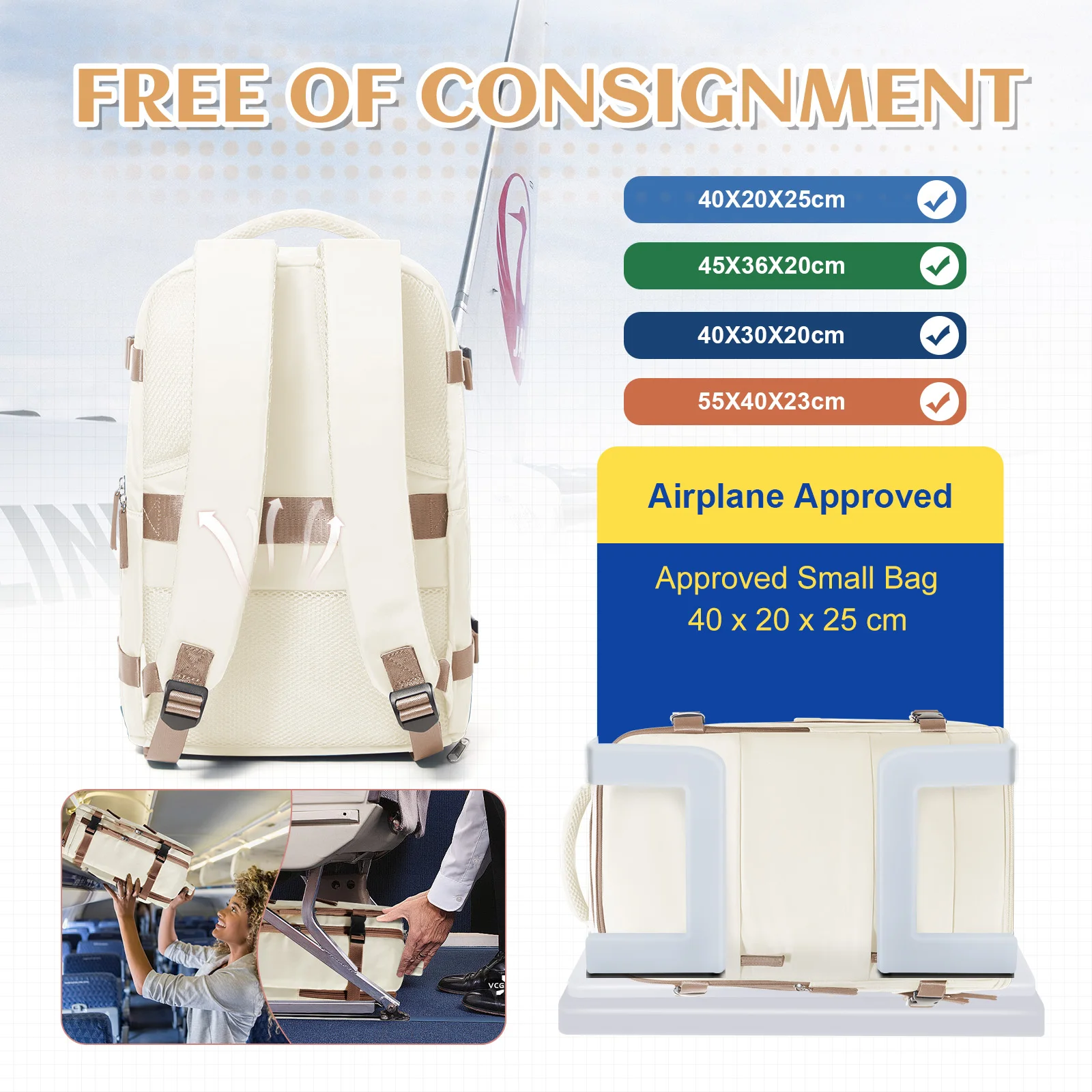
Standard carry-on restrictions typically fall within these parameters:
| Airline Type | Typical Dimensions | Weight Limit |
|---|---|---|
| US Domestic | 22” × 14” × 9” (56 × 36 × 23 cm) | Often unweighed |
| International | 21” × 13” × 9” (55 × 35 × 23 cm) | 7-10 kg (15-22 lbs) |
| Budget Airlines | 20” × 12” × 8” (50 × 30 × 20 cm) | 7 kg (15 lbs) |
Remember that airlines distinguish between “personal items” (smaller bags that fit under the seat) and “carry-on luggage” (larger items for overhead bins). This distinction offers an opportunity to maximize your allowed capacity by utilizing both allowances.
Weight restrictions present particular challenges for leather backpacks, as premium full-grain leather weighs more than synthetic materials. When packing a leather travel backpack, you might need to be more selective with contents to meet weight limitations.
To accurately measure your packed backpack, use a soft measuring tape to check dimensions at their fullest points. Remember to include any protruding pockets or accessories in your measurements. For travelers frequently flying internationally, understanding airline rules for leather carry-on backpacks helps prevent unpleasant surprises at the boarding gate.
Understanding Hip Belt and Shoulder Fit for All-Day Comfort
While torso length establishes your basic backpack size, proper hip belt and shoulder strap fit completes the comfort equation. The hip belt should rest directly on your iliac crest (hip bones), not above or below, as this is where your skeletal structure can effectively support weight.
To measure for proper hip belt fit:
- Wrap a measuring tape around your hips at the level of your iliac crest
- The belt should fit snugly but comfortably around this measurement
- When buckled, the padded portions should wrap around your hip bones, with the buckle centered
Shoulder straps should contour to your body without creating pressure points. Premium backpacks feature straps with:
– Appropriate width (wider for heavier loads)
– Anatomical curvature that follows your chest and shoulders
– Proper spacing that prevents the straps from either digging into your neck or slipping off shoulders
Gender-specific designs account for important anatomical differences. Women’s-specific packs typically offer:
– Shorter torso lengths
– More contoured shoulder straps
– Hip belts shaped for wider hips
A properly fitted backpack distributes approximately 80% of the weight to your hips and just 20% to your shoulders. This distribution prevents the numbness and pain commonly associated with poorly fitted bags. Regular DIY leather care for travel backpacks complements proper sizing by ensuring the comfort features remain supple and functional throughout your journeys.
Mastering Critical Adjustability Features for Custom Comfort
Even with perfect sizing, understanding how to adjust your backpack’s various components is essential for optimizing comfort. Premium travel backpacks include multiple adjustment points that work together as a system.
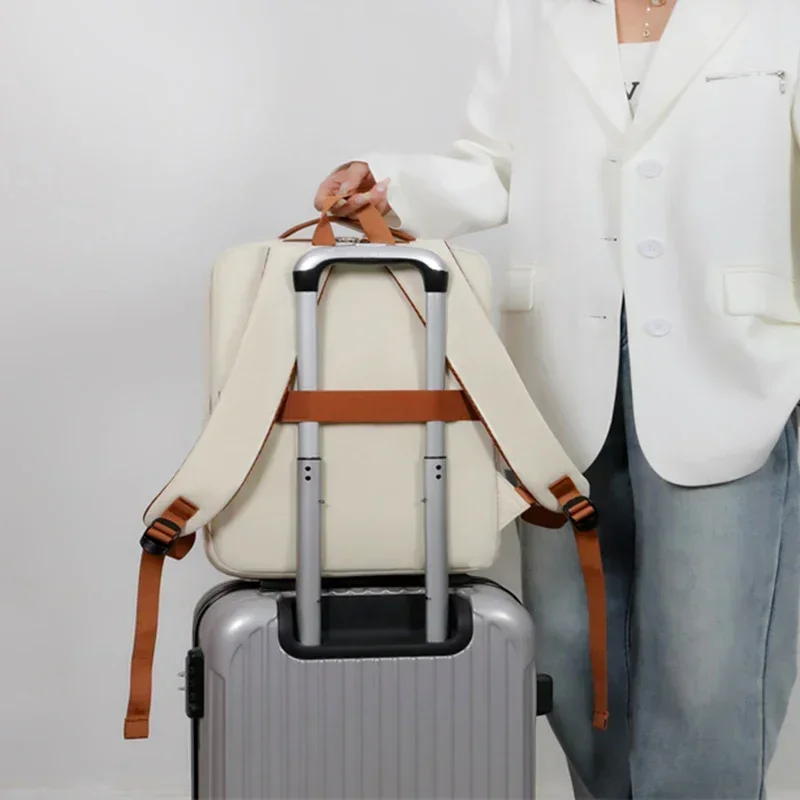
Follow this adjustment sequence for optimal weight distribution:
- Loosen all straps before putting on the backpack
- Position the hip belt first, centering it on your iliac crest and tightening firmly
- Tighten shoulder straps so they contour to your shoulders without gaps
- Adjust load lifters (the small straps at the top of shoulder straps) to a 45° angle
- Secure the sternum strap at mid-chest height to prevent shoulder straps from sliding outward
The physics of proper backpack adjustment involves creating a stable center of gravity close to your body. When adjusted correctly, you should feel the weight centered on your hips, not pulling backward on your shoulders. A simple test: if you can slip two fingers between your shoulders and the straps when loaded, your adjustment is likely correct.
Common adjustment mistakes include:
– Wearing the pack too low (below hip crest)
– Over-tightening shoulder straps, which lifts the pack off your hips
– Ignoring load lifter straps, which help bring the weight closer to your body
– Positioning the sternum strap too high, which can cause uncomfortable pressure
Our leather travel backpacks incorporate thoughtful adjustment systems that ensure comfort during extended wear, allowing travelers to customize the fit to their unique body proportions.
Balancing External Dimensions with Practical Mobility Needs
While internal capacity determines how much you can pack, external dimensions affect your mobility and convenience throughout your journey. A well-designed travel backpack balances capacity with a streamlined external footprint.
Consider these practical implications of backpack dimensions:
- Depth: Affects your center of gravity—deeper packs pull backward more strongly
- Width: Impacts your ability to navigate narrow train aisles or crowded streets
- Height: Determines how far the pack extends above your shoulders, affecting overhead clearance
Ideal travel backpacks maintain a slim profile against your back while distributing volume efficiently. This design principle becomes particularly important when:
– Navigating crowded public transportation
– Storing your bag in overhead compartments
– Moving through bustling markets or narrow historic streets
– Entering and exiting taxis or rideshares
Accessibility features also matter greatly. Consider how you’ll retrieve items when space is limited, such as in airplane aisles. Side-access panels and thoughtfully placed external pockets can dramatically improve convenience without significantly increasing dimensions.
Carry-on leather backpacks specifically address these mobility concerns, offering designs that maximize internal space while maintaining external dimensions that comply with travel restrictions and enhance maneuverability.
Maximizing Packing Efficiency to Optimize Limited Capacity
Even perfectly sized backpacks benefit from strategic packing techniques that maximize available space. Efficient packing transforms a moderately sized bag into a surprisingly capable travel companion.
Try these proven packing strategies:
– Rolling clothes instead of folding (reduces wrinkles and creates compact cylinders)
– Bundle wrapping for wrinkle-prone garments (layering clothes around a core object)
– Using packing cubes to compress clothing and maintain organization
– Filling hollow items (shoes can hold socks, belts, or accessories)
– Wearing bulkier items during transit instead of packing them
Proper weight distribution within your pack significantly impacts comfort. Place heavier items:
– Close to your back
– Centered in the pack
– At mid-height (not at the bottom or top)
Consider seasonality when determining capacity needs. Summer travel typically requires less volume than winter journeys, where bulkier clothing quickly consumes space. Multi-climate destinations present particular challenges, potentially requiring both lightweight and insulating layers.
Thoughtful backpack compartmentalization enhances packing efficiency. Look for designs with:
– Dedicated laptop sleeves that double as frame support
– Separate compartments for clean and soiled items
– Compression straps to reduce volume of partially-filled packs
Our large leather backpacks incorporate intelligent organization systems that help travelers maximize every cubic inch of capacity without sacrificing accessibility.
Finding the Perfect Balance: When to Size Up vs. Size Down
The decision to size up or down presents meaningful tradeoffs that deserve careful consideration, especially when you find yourself between standard sizes or have unique requirements.
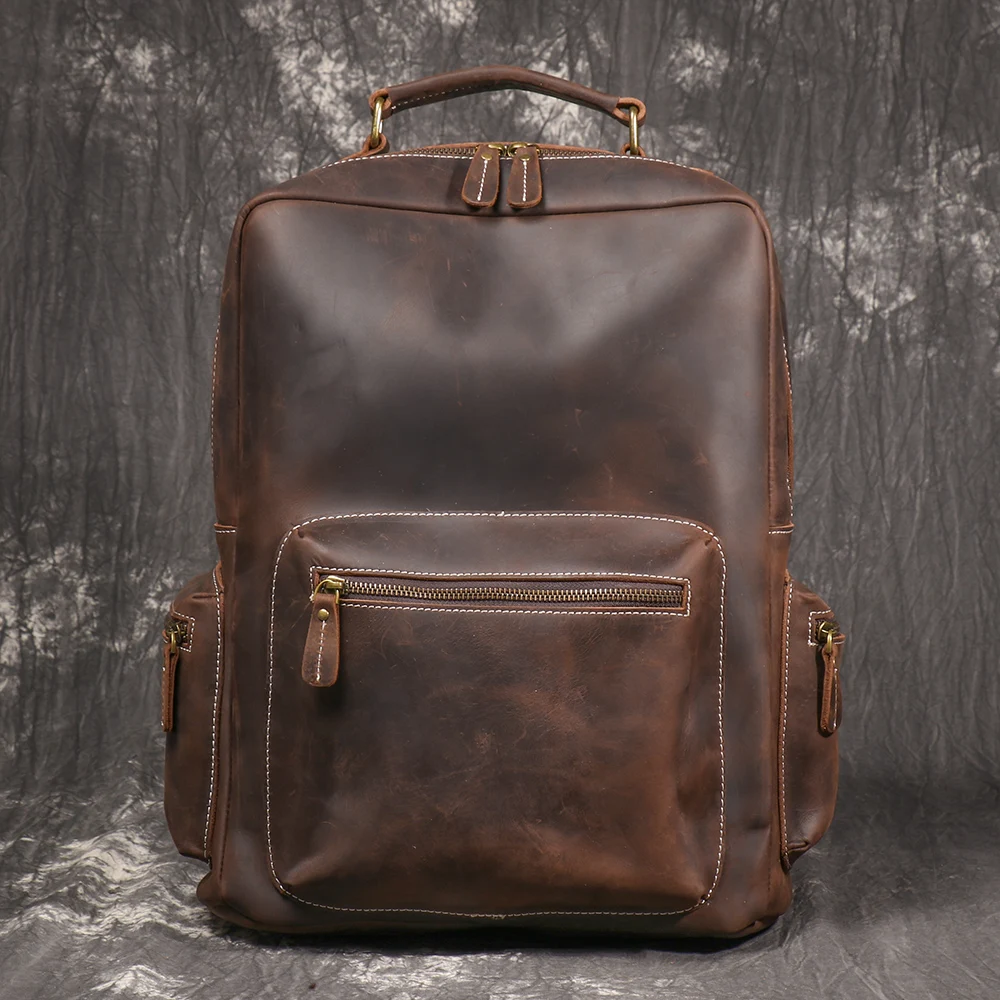
Consider sizing up when:
– You frequently travel in cold climates requiring bulkier clothing
– Your trips typically last more than a week
– You carry specialized equipment (photography gear, work materials)
– You have a longer-than-average torso but smaller frame
Consider sizing down when:
– You primarily take weekend or short business trips
– You’re committed to minimalist packing techniques
– You frequently navigate crowded urban environments
– Your primary concern is airline carry-on compliance
– You have mobility issues that make larger packs challenging
For growing teens, adjustable torso systems offer valuable versatility, allowing the pack to extend its usable lifespan as the user grows. Similarly, those experiencing changing body shapes might benefit from highly adjustable designs that accommodate these changes.
When between sizes, prioritize torso fit over capacity concerns—a properly fitted smaller pack carries more comfortably than an ill-fitting larger one. Remember that quality materials and construction found in men’s leather travel backpacks enable designs that offer surprising capacity without compromising fit or compliance with travel restrictions.
Carry On Leather Backpack, Roll Top Leather Backpack
Price range: $77.76 through $96.48 Select options This product has multiple variants. The options may be chosen on the product page17 Inch Leather Laptop Backpack, Men's Leather Travel Backpack, Men's Leather Work Backpack
Price range: $106.28 through $143.88 Select options This product has multiple variants. The options may be chosen on the product pageBlack Leather Backpack, Small Leather Backpack, Women's Leather Backpack
Price range: $112.96 through $116.12 Select options This product has multiple variants. The options may be chosen on the product pageLuxury Leather Backpack, Small Leather Backpack, Women's Leather Backpack
Price range: $137.48 through $138.28 Select options This product has multiple variants. The options may be chosen on the product page15 Inch Leather Laptop Backpack, Carry On Leather Backpack
Price range: $136.84 through $139.88 Select options This product has multiple variants. The options may be chosen on the product pageLarge Leather Backpack, Women's Leather Backpack
Price range: $97.12 through $97.96 Select options This product has multiple variants. The options may be chosen on the product page
Frequently Asked Questions About Travel Backpack Sizing
Can I use a hiking backpack for travel?
While hiking backpacks offer excellent carrying comfort, they often have features that make travel challenging—protruding frames, excessive attachment points, and designs that exceed carry-on limitations. Travel-specific backpacks balance carrying comfort with travel-friendly features like lockable zippers and streamlined exteriors.
How do I know if my backpack is too big or too small?
A backpack is too big if the hip belt doesn’t rest on your hip bones, the shoulder straps create gaps near your shoulders, or you can’t easily maintain balance when walking. It’s too small if you must regularly compress items to fit or if the torso length feels restrictive when moving.
What’s the difference between men’s and women’s backpack fits?
Women’s backpacks typically feature shorter torso lengths, narrower shoulder strap spacing, more curved shoulder straps to accommodate chest contours, and hip belts designed for wider hip bones. These anatomical differences significantly impact comfort during extended wear.
Is torso length or overall height more important for backpack sizing?
Torso length is substantially more important than height. Two people of identical height can have torso lengths differing by several inches, requiring completely different backpack sizes.
How much should a fully packed travel backpack weigh?
As a general guideline, your packed backpack shouldn’t exceed 10-15% of your body weight for comfortable travel. This typically means 15-25 pounds (7-11 kg) for most travelers, though athletic individuals might comfortably carry more.
Can expandable backpacks still qualify as carry-on?
Yes, if designed thoughtfully. Look for expandable backpacks that maintain carry-on dimensions in their compressed state, using the expansion feature only when checking the bag or for ground transportation portions of your journey.
How do I pack a backpack for proper weight distribution?
Pack heavy items close to your back at mid-height, medium-weight items throughout the middle zone, and lightweight, frequently accessed items in outer pockets. This distribution keeps the center of gravity close to your body for better balance.
Our women’s leather travel backpacks are specifically designed to account for these fit considerations, offering tailored sizing that addresses the unique ergonomic needs of female travelers.
The Long-Term Benefits of Investing in Properly Sized Travel Gear
Choosing correctly sized travel gear delivers benefits far beyond immediate comfort. Over time, properly fitted backpacks promote better posture and reduce strain on your musculoskeletal system, potentially preventing chronic issues that develop from repeatedly carrying imbalanced loads.
The financial advantage becomes clear after multiple trips—investing once in the right size prevents the cycle of purchasing and replacing inadequate equipment. Premium backpacks with proper sizing and adjustment features typically last for decades rather than seasons, particularly when constructed from materials like full-grain leather that improve with age.
From a sustainability perspective, choosing well-fitted, durable equipment reduces the environmental impact associated with the disposal and replacement of inferior products. This approach aligns with conscious consumption principles that value quality and longevity over disposability.
Most importantly, proper sizing enhances your travel experience by removing physical discomfort from the equation. When your gear works in harmony with your body, you’re free to immerse yourself fully in new experiences rather than being distracted by nagging discomfort.
Summit Carry’s design philosophy emphasizes this harmony between traveler and gear, ensuring that our small leather backpacks and larger travel solutions provide the perfect fit for every journey—because the right size transforms your backpack from a mere luggage item into a trusted travel companion.

